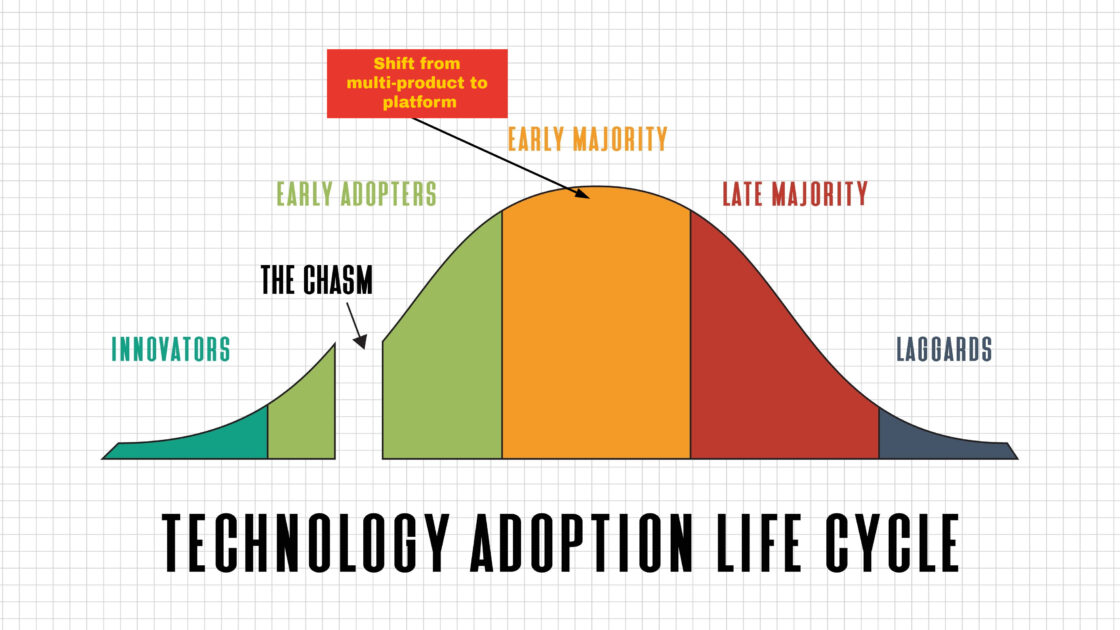Moving Beyond the Multi-Product GTM: The Power of a Platform GTM Strategy
Harnessing the Potential of a Platform GTM Strategy for Scalable Growth
In an increasingly competitive B2B landscape, strategic positioning and innovative go-to-market (GTM) models are imperative for sustainable growth. One profound evolution I’ve witnessed across my career is the shift from a multi-product GTM strategy to a platform-centric approach. Having successfully executed this pivot myself four times, I have seen its potential to drive scalable growth, bolster annual recurring revenue (ARR), and amplify customer lifetime value (CLTV).
The power of platform GTM strategy: simplification and growth
By transitioning from selling individual products to positioning your suite as a holistic platform, you redefine the relationship between your company and its customers. Rather than offering piecemeal solutions, a platform GTM strategy unifies your offerings under one compelling narrative, creating an overarching story that resonates with customers and sales teams.
A classic example of such a pivot is Adobe’s transition from selling discrete software like Photoshop, InDesign, and Illustrator to introducing the Adobe Creative Cloud. Adobe’s transition simplified its value proposition and streamlined its GTM strategy. Similarly, companies looking to drive growth and consolidate their market presence can consider a similar pivot.
Reshaping perceptions and increasing ARR
Beyond simplifying your offering, a platform strategy enables you to target higher-level decision-makers within customer organizations. You’re no longer confined to selling with the line of business; your platform narrative allows you to move up the customer’s org chart, thereby increasing customer revenue metrics, such as average order value (AOV). Moreover, this pivot is a strong signal of your company’s growth, positioning you as a platform player rather than a provider of unique tools.
An important consideration during this transition is the repackaging of your product suite. The objective is to present your products as a part of a category that prestigious analyst communities, like Gartner or Forrester, will recognize and appreciate––or create a class that helps monetize company growth.
The essential role of product marketing
Reimagining the value proposition is a key action you, as the PMM, can take. Create a vision for customers’ growth with your platform, showing how your solution will fit seamlessly into their operations. PMMs are also the custodians of the platform’s positioning and messaging, building out the “marketecture” to visualize the new platform strategy.
Product marketing should treat this transition as a significant launch that will raise internal and external awareness, emphasizing the platform’s unified and holistic capabilities. This requires alignment across various functions—from the C-suite to sales, product, and marketing teams—making PMMs the crucial link.
PMM can also play an essential role in pricing and packaging. With a platform strategy, tiered subscription models can be introduced based on the need and maturity of the organization––as the company grows, the platform subscription grows as well.

The payoff
The transition to a platform addresses several challenges. Externally, it eliminates market confusion that can arise from marketing multiple products to different buyers. This clarity can help enhance your brand’s reputation, encourage customer loyalty, and ultimately drive conversions.
Internally, the platform lightens the load on sales teams, who are no longer tasked with deciding what to sell first. Additionally, it alleviates the marketing team’s burden of pushing several products at once, enabling them to focus on delivering a coherent and compelling message about the platform.
In essence, adopting a platform strategy means moving from a fragmented approach to a unified one. It enables you to create a compelling vision for customer growth, simplifies your GTM, and solidifies your position within the industry.
Navigating the transition to a platform GTM strategy
While the benefits of this pivot are compelling, it’s also worth acknowledging that it’s a significant undertaking that requires careful planning and execution. Transitioning to a platform GTM strategy may require organizational changes, new skills, and a shift in mindset throughout your company.
However, the challenges of this transition can be mitigated by a phased implementation approach, robust change management, and ongoing communication. Regularly share updates, listen to feedback, and continually optimize your strategy based on learnings. Remember, the ultimate goal is to deliver more value to your customers and, in doing so, increase the overall success of your organization.
Embracing platform GTM for business growth
Embarking on the journey from a multi-product to a platform GTM is not without its challenges, but it’s a proven pathway to scalable growth. By effectively reshaping how your offerings are perceived, this pivot could be the catalyst your organization needs to reach new heights. It’s time to reimagine your product not just as a tool but as a platform that provides comprehensive solutions to your customers’ problems.






